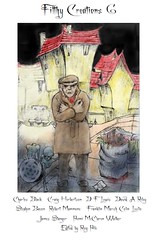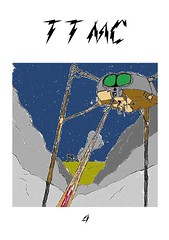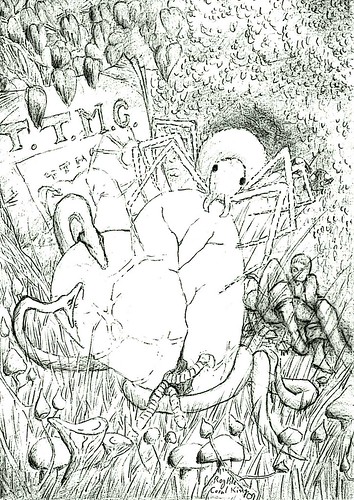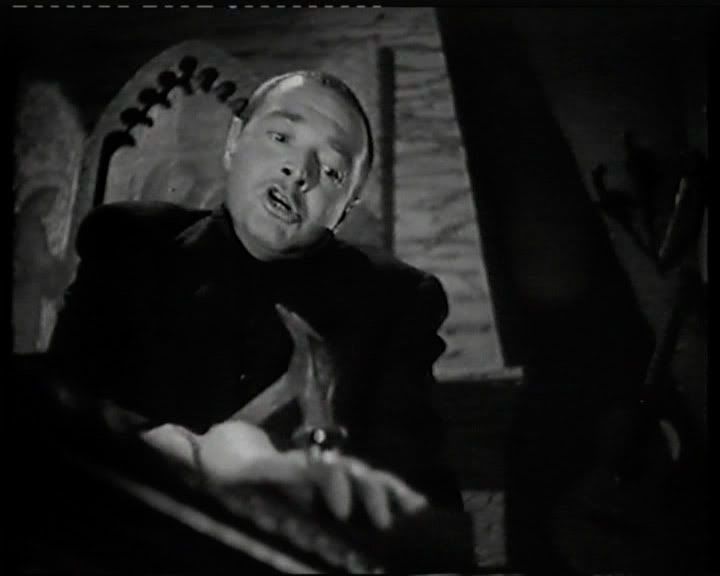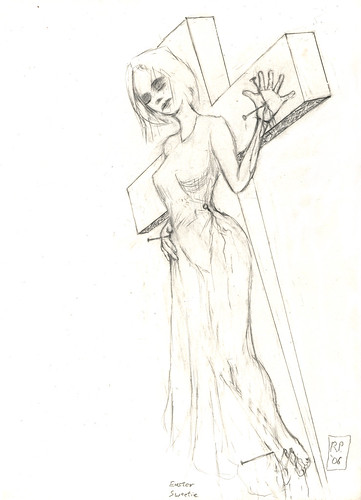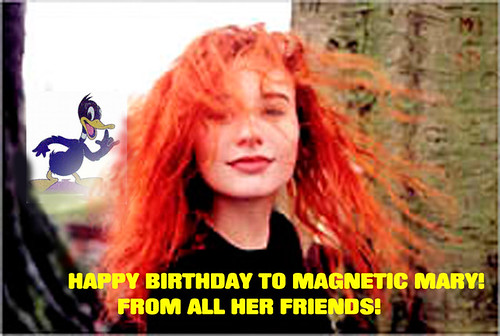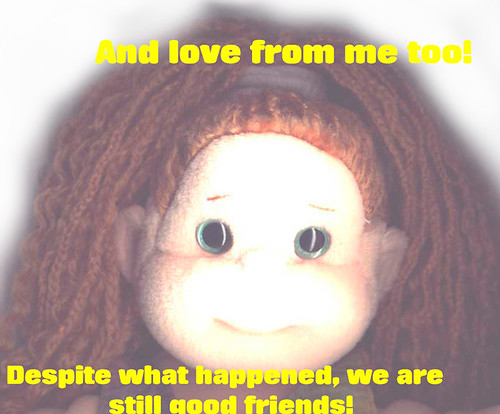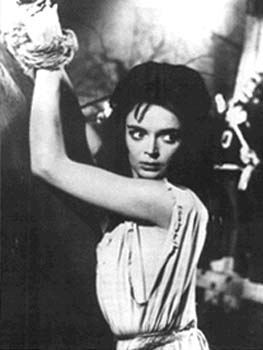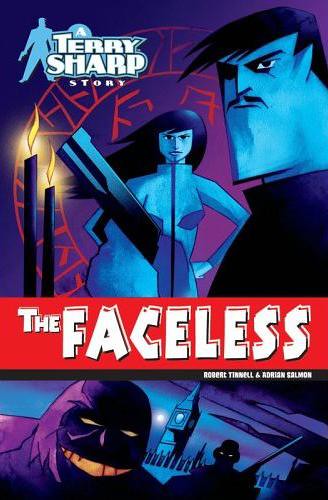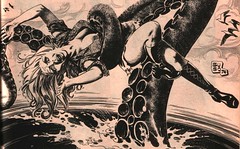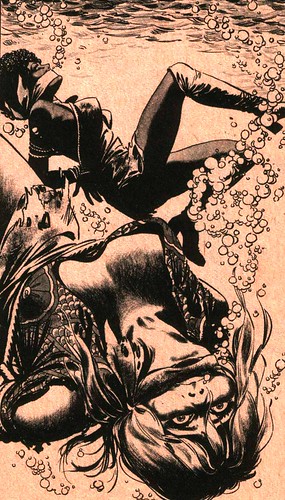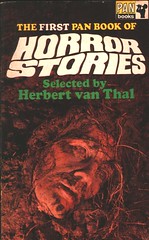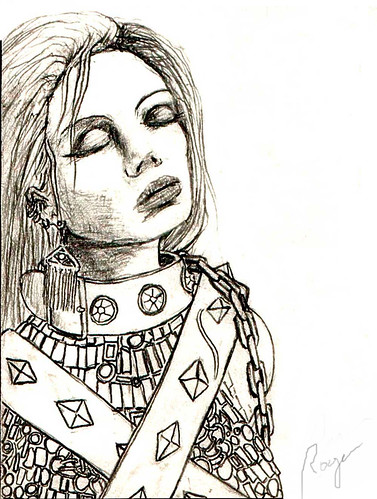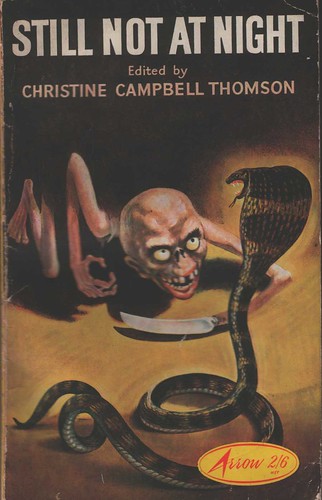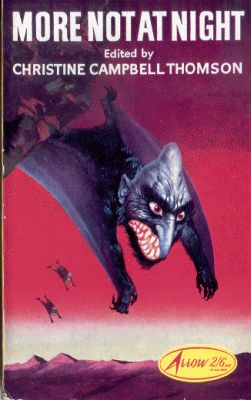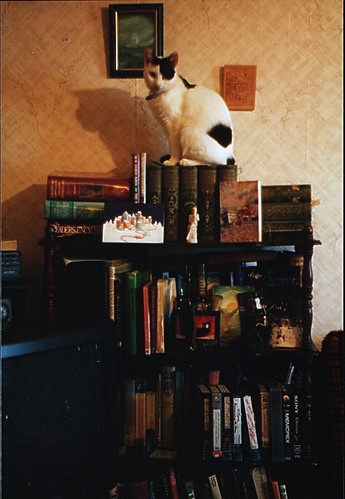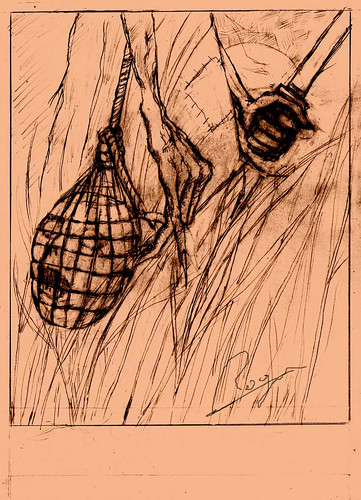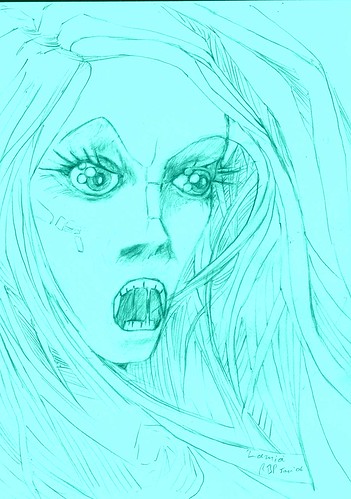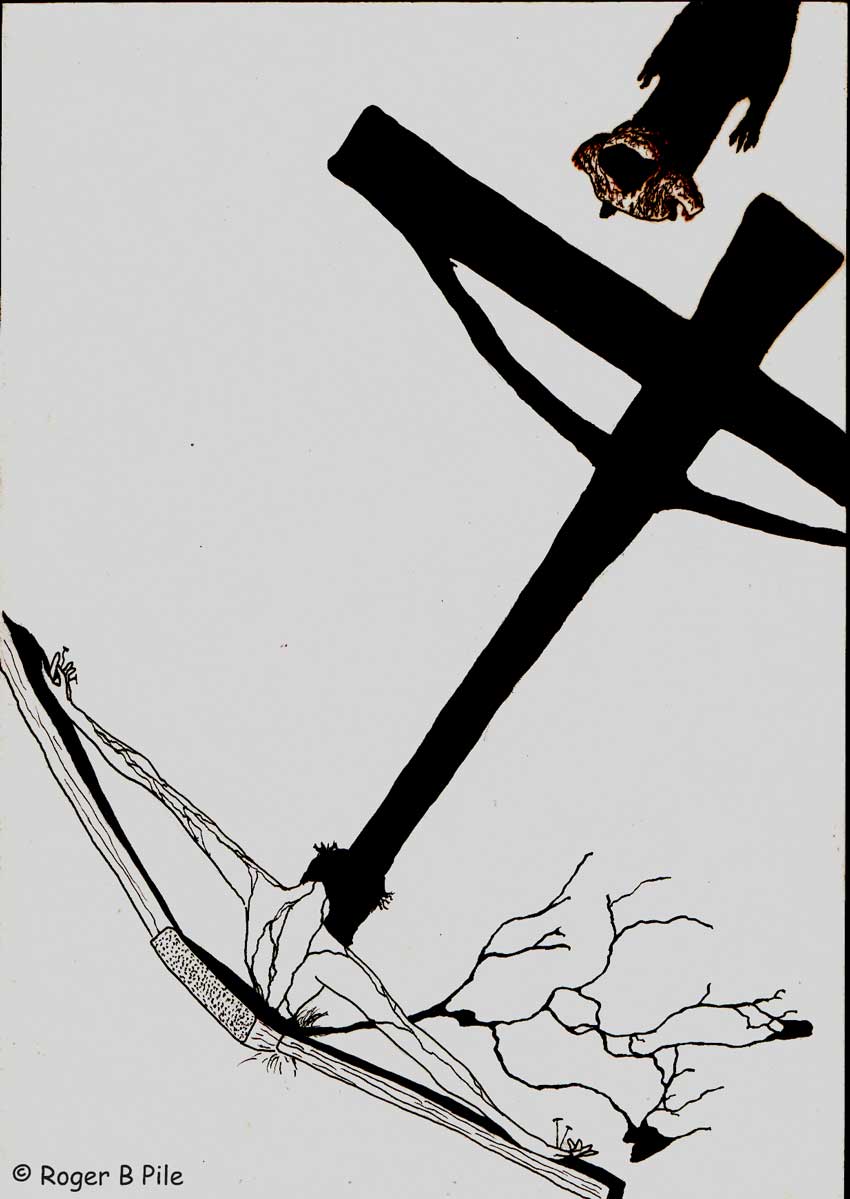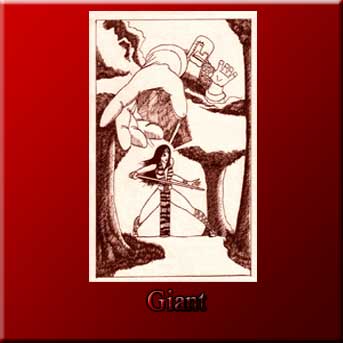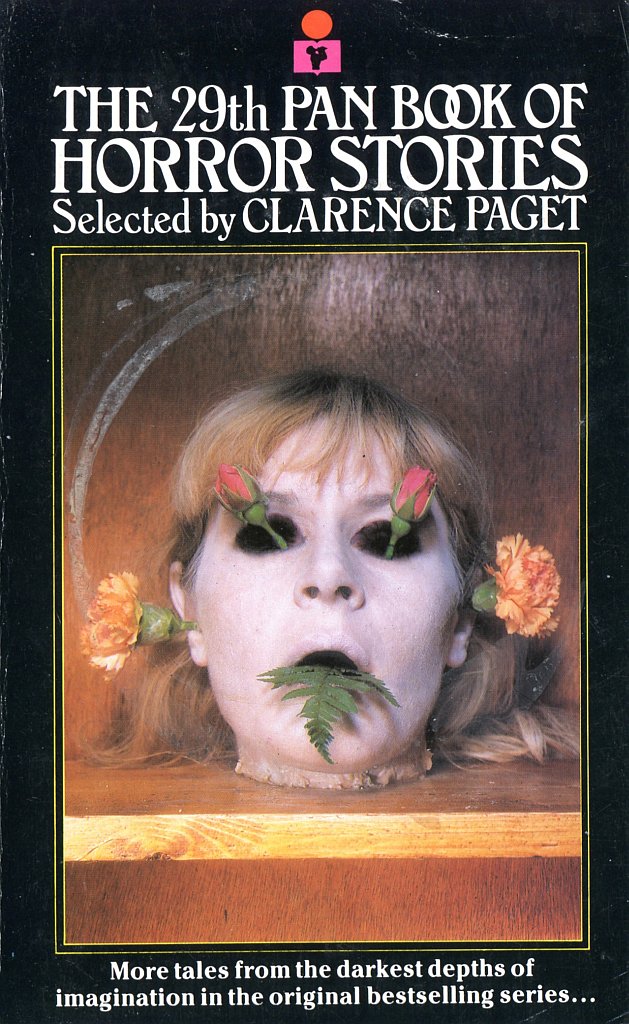
Craig Herbertson's first story was published in The 29th Pan Book of Horror Stories. It’s now become legend how Craig didn’t learn of the story’s publication for years because Editor Clarence Paget forgot to tell him, then in 1999 Craig discovered the story on the internet.
Now, from Parallel Universe Publications, a publishing house owned by another
of those original Pan authors, David A Riley, comes Craig Herbertson’s new collection
The Heaven Maker and Other Gruesome Tales.
In his
foreword, Craig writes “Horror is best
sustained in quick bursts; it’s exciting but also tactile, visceral,
disgusting, often amusing, mostly horrible and sometimes nauseating.”
The first stories in this collection might go some way to
explaining how Craig became what he is today. New Teacher, he writes, is
“based largely on my experiences of school in the 1970’s. Not so much a horror
story but a grim depiction of the times.” This one introduces a ghastly group
of teachers gathered in the smokers’ staff room, just around the corner from
Room Three where, as luck would have it, new teacher Mr Nugent is attempting to
teach music to a Year 1 class. The teachers are discussing the likelihood of
Nugent lasting the term, when Miss Hawthorne arrives to question the ghastly
din emanating from the room, and asks who exactly is taking the class while Nugent
is sick? This story’s gruesome ending will gladden the hearts of any victims of
political correctness who long for a return to simpler times.

Synchronicity is another story of
Bellport High, set at a reunion at a restaurant which raises inevitable but
better-forgotten memories and stories, mainly of sadistic bullying and
generally thuggish behaviour which anywhere other than in an English school
would have had the miscreants packed off to Borstal. Two of the worst
offenders, former maths teacher Weasel and orphaned student Gray “shared a
table with us like camp commandants partying with their prisoners.”
Peters
raises the subject of synchronicity. Time has healed most old wounds, with the
notable exception of Mulholland’s eye, lost as a result of one of Grey’s nasty
tricks. And possibly the evening might have passed into the murk of history if
the tortured and humiliated Angel had not been present and had not provided his
unforgettable illustration of synchronicity. This story received an honourable mention in
Ellen Datlow’s Best Horror of the Year.
The torture of small boys with canes and leather belts is
not unusual at Bellport High, but in The Art of Confiscation English teacher
MacVicars, a man of considerable intellect, prefers to express himself more
subtly; his chosen forms of torment are intended to warp a victim’s mind rather
than his body. When he collides with
Farantino the boy drops the book he’s carrying, whose lurid cover reveals it as
the third volume from a well-known series of horror anthologies, an object of
MacVicars’ contempt. But when MacVicars decides to make a target of the thoroughly
evil boy genius that is Farantino, he finds he’s biting off more than he can
chew. So far this is my favourite of the Bellport High stories.
Farantino turns up a second time in Soup. By this time his genius has expressed itself through
entrepreneurship combined with criminal enterprise which has built a financial
empire worth millions, while a delight in culinary arts has gained him a
worldwide reputation as a chef - with a particular fondness for soup. When a
group of masters and former students from Bellport High is invited to
Farantino’s chateau home, they are given a tour which includes the dank subterranean
chambers still furnished with ghastly instruments of torture.
"Look carefully on that instrument. Imagine
the broken shambles of a human being strapped upon that wheel, writhing in the
splintered chamber of its own bones; a huge rag doll, screaming, slimed with
blood and gore. And there, the cauldrons with which the Percano cook their
victims – a process lasting three days, three days of excruciating agony.”
Described
by Demonik, administrator of
Vault of Evil as
“Quite possibly the most
beautifully written example of cannibal torture porn I’ve ever read.” This
one’s straight from the original Pan mother-lode.
The Janus Door
“…I am sure I saw
through the ragged struts of my window a vision of blinding light from the
doorway beyond.
“What I am less sure about is the figures:
Strange, ethereal silhouettes like crucified saints crowding the door frame;
tormented angels grasping outwards, begging me to enter.”
From the
moment that the unnamed narrator first passes through the door into his new
flat it is clear that this is no ordinary residence. The previous tenant had
some weird obsession with architecture, and evidence of this still clutters the
spare room in the shape of scattered sheaves of papers and electrical
components of obscure and strange device. Gates and doors, literal and
abstract, were frequently the subject of the unknown researcher. Further
research reveals that the apartment block was the work of an architect named
Hosanna who had committed suicide when funding for her project was withdrawn
before its completion. Doorways to other dimensions are not unusual in tales of
imagination, and this story seems to come somewhere between The Dreams in the Witch House and Our Lady of Darkness.
I was
baffled to see that this story had no previous publication acknowledgement. I
remember reading it in the
Filthy Workshop and would have used it in FC magazine, but
I’d thought it was snapped up by another publication. I also remember feeling
weirdly affected by the story, and hesitating to re-read it. I wasn’t sure how
I’d like it this time round. I shouldn’t have worried; it’s brilliant.
It is not always wise to cheat on one’s crippled wife when there is still the remotest chance that modern surgery might restore her to full health. And when she has the inherited resources of the Spanish Inquisition at her disposal with an outlook on life probably a little less sunny than that of Lucrezia Borgia, when this is the case a man should seriously consider faithfulness as an option.
Fortunately for us, Eduardo doesn’t, so when he wakes in The Waiting Game it’s to find himself bound to his lover Maria by a fine chain, which has been passed through his septum and then hers, with only a gauzy curtain separating them. The two are imprisoned in a deep cell beneath the chateau, which frankly resembles Poe’s torture chamber in The Pit and the Pendulum.
“Taste and smell had always been so important. Now they were utterly subordinate to sound. Audition had told him that he was propped in some kind of high chair and that the wind blew through hidden recesses below. From this single lonely sense, his fevered mind constructed a vast sprawl of underground chambers leading into hopeless
oblivion.
“It had taken him almost an hour to mentally construct the immediate scene. A large cell. Eduardo and Maria propped up on two facing chairs. The chairs raised on platforms above a pit. A walkway to allow access. Some of this was assumption but the iron chain piercing his septum was an unavoidable reality.”
Their jailer is Eduardo’s wife, the cheated Catherine; and the revenge she has
planned is as vicious as anything dreamed by Poe.
Moving along, we get to a story which shows Craig at his meanest and funniest. Gertrude is a story of a schoolgirl who was a bit of a silly cow until the day she committed suicide in the Bellport High toilets and then is reincarnated as a… cow. If I say this one is funny, I should add that you’ll best appreciate it if you have a very well-developed sense of black, sick and twisted humour.
Another short one is Spanish Suite, concerning Paul Brown, a
travelling rep for Cameron’s Sweets who’s been sent to tour the Continent with
the intention of extending old man Cameron’s boiled sweet empire across Europe.
“…it’s Spain that counts,” Cameron tells him. “And these Catalan’s can be very stiff. I’m absolutely depending on you to crack Spain.”
When Paul reaches Spain, he finds it a more difficult nut to crack than he’d expected. Breaking his journey at a small town one night, he gets chatting with a waiter. The waiter’s brother-in-law is the town’s mayor, whose health has been failing since his beautiful young wife had run away with a lover. Disgraced, the woman’s family have disowned her and now the waiter thinks she has probably joined the prostitutes who sell their bodies by the roadside. The two men separate after getting very drunk, but next day Paul receives a letter from his drinking companion which renders him almost ecstatic when he learns of the breakthrough that he needs. The letter also tells him he’ll have to wait for more details as the mayor has died in the night and his friend must attend the funeral
tomorrow. It is on the road out of town, near the grave yard, that Paul encounters the girl. Ironic and ghoulish, the Spanish setting contrasts nicely with the horror here.
A Game of Billiards is another of Mulholland’s tales, this time a bit of a ripping yarn, but not one you ever found in Boys Annual, set in First World War India where the unpleasant Captain Petronius is cutting a ruthless path to the top... though possibly not in the field of indoor sports. This is a story of rivalry between Captain Boyd and the repellent Petronius, both of whom fall in love with the same woman. As you know, these things seldom work out happily. In fact the conclusion is quite brutal and grim
Mulholland is not just a character grown out of the Bellport school stories but Craig’s narrator, his guide to the story, an earth to channel the source material. In
Not Waving Lotte reveals to Mulholland how she remembers her childhood holiday with a boy called Rin in a small French village in the perfect summer of 1973 in the house rented by her parents, Le Manoir, a rambling building perfect for children, cluttered with books (which her mother observes cynically were probably never read, being intended only for show) and the discovery of a case full of ‘real’ books, detective thrillers, which meet with her mother’s approval.
The top floor of the house is uninhabited, and there is of course one door which is locked, no key to be found. This is a strikingly mature story; at risk of sounding too fey, it’s bewitching, full of colour and light, and brilliantly told. It’s also quite horrible and, as with many of these stories, will stay with you some time after reading.
*
“Couldn’t he see the navigator was full of electronic maps? Who could be
lost in a virtual universe?”
The Navigator poses the question: If life is a journey then can a car trip be analogous to Dermott and Jane’s marriage? As the countryside gets less and less familiar, the smug feminine voice of the GPS begins to grate on Dermott’s nerves, and he’s convinced he knows a better route. Why do they design these systems with female voices anyway? It’s just asking for trouble when a bloke’s behind the wheel.
But Anne doesn’t need a GPS as she cycles home after her massage session, in
Steel Works. The massage has left her feeling relaxed but with senses heightened
and all a-tingle. Her surroundings take on an almost hallucinatory quality. But
why does the familiar site of the old steel works, belching smoke and shattering the night with flickering light, fill her with such disquiet? And why does she seem compelled to approach it? This brilliant little gem of a story poses more questions than it answers. Are we reading about a mind shattered by abuse or does something even more monstrous lie in wait for her?
This one reminded me by turns of the writing of Thomas Ligotti and Robert
Aickman and, days after reading, it remains disturbingly fresh in memory.
*
The Heaven Maker first appeared in 1988 in
The 29th Pan Book of Horror Stories. It’s now become legend how Craig didn’t learn of the story’s publication for years because Editor Clarence Paget forgot to tell him, then in 1999 discovered the story on the internet.
When I finally got to read the story I approached it with caution, knowing the reputation the series had for going off the boil towards the end. But I knew Craig’s
writing. His story
Strange Fruit, borrowing the title of Billy Holiday’s song about race hatred in America’s Deep South to head a tale of warped genetic engineering, slavery, bigotry and child murder, had appeared in
Filthy Creations 2, and I’d read his novel
The Seventh Silence, edited by Storm Constantine, about a school stranger by far than Bellport High – and in places nastier, too.
The Heaven Maker gets off to a start which is grim even by the standards of the Pan horrors. Morden is in a hospital ward being interviewed by a doctor. His daughter Cathy’s corpse lies in a nearby bed, kept in a simulation of life by surrounding machines, for the sake, Doctor Baptiste explains, of the unborn baby which is still living in her womb.
His son John’s body is being brought up from the morgue for Morden to identify.
John had attempted to rescue Cathy after the car crash had plunged her into an
icy river, but both had been swept under, and John had been clinically dead for
three hours before their bodies were recovered. Morden identifies the body of
his son and is about to leave the ward when, quite shockingly, the corpse
returns to life, sits up and begins to scream.
This of course is only the start of a story which is quite long but grips and
compels the reader to the end.
The Anningley Sundial:
"As he turned from the door a rather peculiar thing happened. He had left the mezzotint face up on his deal table during the transaction. Perhaps it was simply a trick of the lights but it seemed for a second that something ran swiftly across its surface. Nobody is really fond of insects on their table and Mulholland was hardly an exception; but his impression when he reflected on it was that the thing he had seen was not after all an insect but something that bore an uncanny resemblance to a tiny
shambling figure; a figure of disturbing appearance that one might observe in a
series of frames in a creaky old silent film."
“M R James was always a favourite,” writes Craig, “and I sent Mulholland scurrying after him in 2011…”
Now personally, I’ve quite a strong resistance to stories in the M R James style. I must stress that it’s a personal thing; sometimes for my own amusement as I read these stories I imagine bands of rioting football fans rampaging through all those cosy studies, throwing dusty bottles of port into glass-fronted bookcases and scattering glowing coals from the grate across priceless Turkish carpets, trashing,
smashing and generally not being nice to everything that clutters up the story. Truth is, this sequel to
The Mezzotint isn’t half bad. Every time I decided I was going to pan it, I found I was stumbling into another passage like this one:
“In the instant where the snow sprayed to left and right Norton’s moving hand gave an illusory movement to the carved surface of the podium. What he saw was a large Pholcus phalangioides
, known by children the world over as the ‘daddy-long-legs spider’. As a child he had never been terribly frightened of this ungainly creature with its long fragile legs. As an adult he had become aware that this was the spider that ate other spiders. Not a pleasant thought; and in that second the grotesque thing had seemed to move. In the half shadow Mulholland leapt back and then almost in reaction, craned his head forward and saw how much he was mistaken.
“He saw before him, the surface of a sundial; the ‘spider’ merely the long radial lines and crabbed markings of the hours.”
The writing in this story is frequently so exquisite that it leaves me with my personal prejudices in a bit of an awkward place. So what would you say?
Leave the writing to speak for itself, I guess.
Leibnitz’s Last Puzzle
This story expertly combines the
traditional smoking-room horror tale with a mind-bending mathematical puzzle,
which, if solved, could unleash a demonic force. Norton and Lubeker are two
university pals who invite scandal when they abandon their work – a
‘significant’ mathematical treatise – and take off into the Yorkshire Wolds on
a camping trip. For a time they seem to have disappeared off the face of the
Earth; but then Mulholland receives a letter from Norton inviting him to join
them.
He
finds Norton amid a collection of esoteric books on subjects ranging from maths
to occultism; and there is a strange device made of mirrors whose purpose he
can’t divine. He also sees a letter which could only have been written by the
scholar and alchemist Leibnitz. This letter alone could establish the students’
reputations.
It
turns out that the two have found a curious structure, apparently a Masonic
temple, situated on the two sides of a ravine. And this is where Mulholland
finds Lubeker, with what appears to be a bizarrely incomplete human corpse.
Somehow Leibnitz has stumbled on an equation that opens a door into another
dimension, and passing through it has rendered him an exploded thing, horribly
incomplete.
“You might have seen those anatomical drawings in the medical
books or perhaps that dreadful body sculpture that was paraded around Europe. Try to imagine that.
Add what you see under a very good microscope, an eclipse and lots of moving
mayflies trapped in a glass. Laugh if you like, I can get no closer to an
explanation of that dreadful thing.”
Working from Leibnitz’s letters, Lubeker
has now become completely obsessed with solving the puzzle, even though solving
it might lead to disaster.
I
found it quite a demanding story. Herbertson’s piecing together of history with
whole cloth is brilliant; I did exchange messages with him shortly after the
story appeared in Charles Black’s Book
of Horror as I wasn’t sure how much was imagination, how much based on
fact. Too much time has passed since then, and I suspect that that brief
correspondence disappeared with the death of my last computer. Thinking of the
dread effect Craig’s replies had upon the working of my brain at the time, I
think it’s probably better for all of us that they’re not resurrected.
The
mood of the traditional smoking room tale is perfectly judged here, and this
is an excellent story.
Three more shorter ones…
The Glowing Goblins inhabit
the cupboard under the stairs where young Colin is locked in by his parents as
punishment. Slightly surreal and with a suggestion of a remembered childhood
nightmare, this one appeared over twenty years ago in Nik Morton’s Auguries #16. Gifts appeared last year in the Big
Vault Advent Calendar, so could be remembered by Vault members, though this
was my first sight of it. Craig says that he took eight minutes to write this
short piece about a sinister Santa and his worrying cargo of presents.
Big Cup, Wee Cup: Milne cannot
understand why Mulholland has not attended the Graal symposium, “the single
most important meeting in the last century of the Order.” What could be more
important? He’s even more astonished when Mulholland says the sacred relic has
been melted down, and what’s more, he seems quite happy about it! Craig writes
of this one: “Sorry, I couldn’t resist this.” It definitely made me smile.
Farantino does turn up one more time in this book but not in
any active role as a guest at The
Tasting, which gets my own vote as one of the best stories in this book. The Tasting is a revenge story which
combines a love of the Highlands and Scotch whisky.
Here, a select few are gathered at a party held by the wealthy Bannerman at his
hotel north east of Fort William.
Bannerman’s restaurant is a well-kept secret, exclusive, though not to
impoverished locals who might be passing. An old grudge once existed between
two of the diners, Campbell and Macdonald. Years before, Macdonald had been
engaged to the magnificent red-headed Jeanie Brown, who had jilted him to run
off with the best man – and Macdonald’s best friend – Campbell, on the eve of
the wedding. Friendship between the two men had changed overnight to almost
murderous rivalry. A year later, Campbell
had announced his forthcoming wedding to Jeanie, but once again the wedding had
to be abandoned when it’s learned that Jeanie has wandered off into the snow and
become lost. Campbell and Macdonald become reunited through their search for
the missing bride, but Jeanie Brown’s body is never found.
Now, once a
year, the two men meet and share a bottle of Macdonald’s own privately
distilled whisky, a whisky believed to be of unsurpassed quality though never
tasted by any others, in a toast to the memory of the fiery red-head.
This year,
thirty years after Jeanie’s death, Macdonald announces that finally he is ready
to reveal the location of his secret distillery. There is of course a catch.
Those who want to see the distillery must climb the Craich
Falls with him the next day, a
climb which had almost resulted in Campbell’s
death thirty years before.
This is a
lengthy and sprawling story, with characters introduced to add colour along
with apparently incidental detail of local hunting and climbing traditions, but
as the story moves along it gathers momentum and continues to build suspense
towards the end – which, after a tense climbing sequence, is unpleasant enough
to disappoint no-one.
The book is introduced by
Award-winning children’s author Janis Mackay, who admits to once paying Craig
thruppence (at the age of five) for a glimpse of him in his vest (or so Craig
tells her), and possibly helped provide the genesis for the Bellport High
school stories when they discussed teachers in later years.
The cover photo shows an acrylic,
collage and mixed media sculpture by Brian Keeley BA (Hons), MA. Sure as hell
looks like someone I know, anyway, and the first Plasticine cover pic I’ve seen
since… actually it's the first I've seen since John W Campbell's The Thing and Other Stories. But I think this is me out of here.
Nice one Mr Herbertson.
 Craig Herbertson's first story was published in The 29th Pan Book of Horror Stories. It’s now become legend how Craig didn’t learn of the story’s publication for years because Editor Clarence Paget forgot to tell him, then in 1999 Craig discovered the story on the internet.
Craig Herbertson's first story was published in The 29th Pan Book of Horror Stories. It’s now become legend how Craig didn’t learn of the story’s publication for years because Editor Clarence Paget forgot to tell him, then in 1999 Craig discovered the story on the internet.
